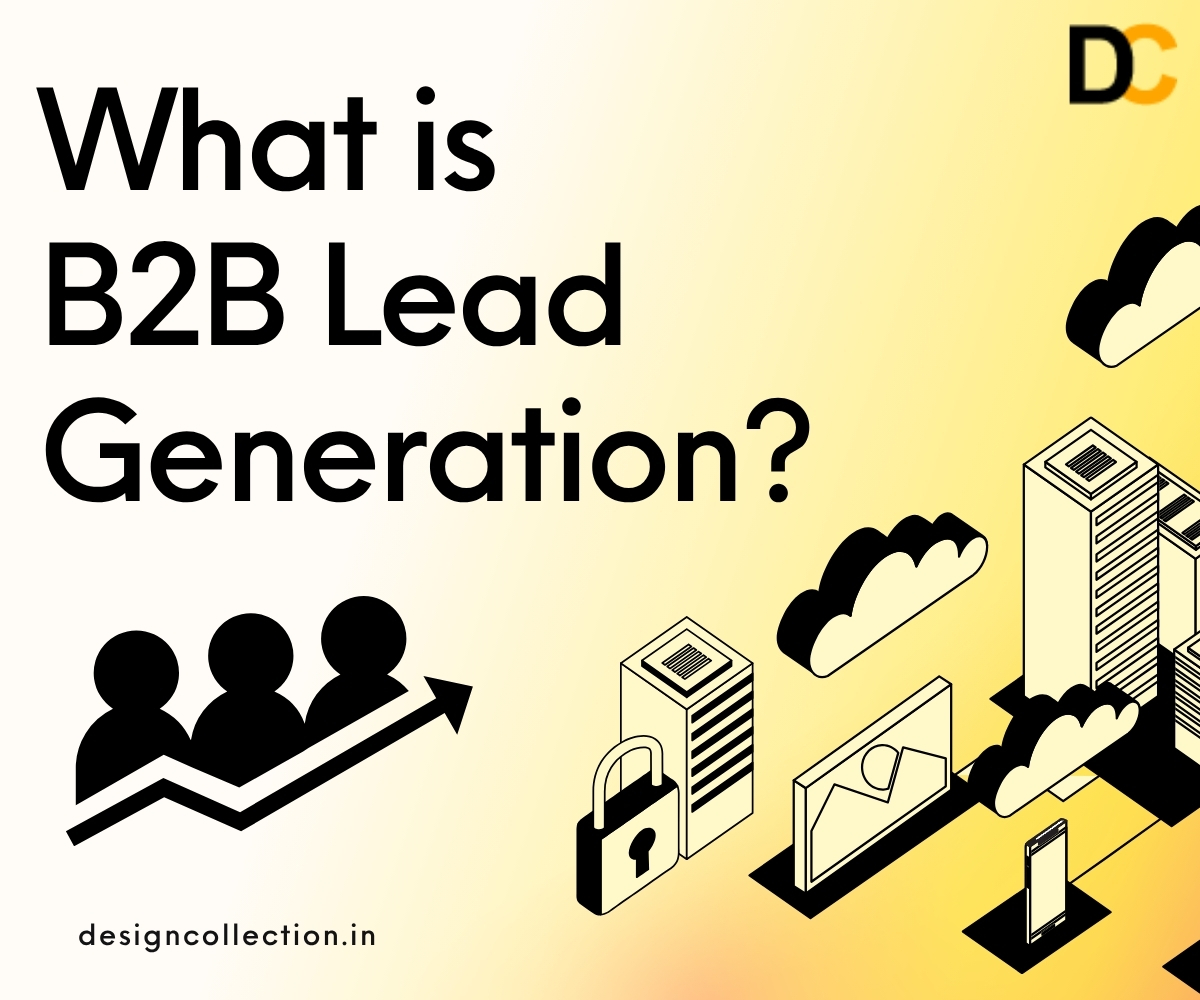A Complete Guide to Finding and Converting High-Quality Business Leads

Introduction
Imagine trying to sell a product without knowing who might be interested in buying it. Sounds frustrating, right? That’s where B2B Lead Generation comes in. It’s like planting seeds in the right soil so your business can grow strong and steady. For digital marketers, it’s the lifeblood of any successful business strategy targeting other businesses.
In simple words, B2B lead generation is the process of finding businesses that might be interested in your product or service—and then turning them into customers. It’s not about casting a wide net but about finding the right fish.
Let’s dive into what makes this strategy tick, why it’s important, and how you can master it.
1. What is B2B Lead Generation?
B2B Lead Generation is about identifying and attracting other businesses that could become your customers. It’s like matchmaking for companies—you help businesses find solutions (your product or service) that fit their needs.
Think of it this way: You’re not selling to a person buying a phone. You’re selling to a company looking to equip 100 employees with communication tools. The stakes are higher, the decision-making process is longer, and the approach has to be more strategic.
2. Why is B2B Lead Generation Important?
Without a steady flow of leads, businesses stall. B2B lead generation fuels your sales pipeline, brings in potential customers, and builds long-term growth.
Some benefits include:
-
Increased Sales Opportunities
-
Targeted Marketing Efforts
-
Improved ROI
-
Better Customer Relationships
3. How is B2B Different from B2C Lead Generation?
The main difference? You’re selling to a team, not a single person.
-
B2B focuses on logic, ROI, and long-term benefits.
-
B2C focuses more on emotions, deals, and convenience.
In B2B, you often have to convince multiple decision-makers—CEOs, managers, finance heads—before making a sale.
4. The B2B Lead Generation Process
The process involves several key steps:
-
Identify Your Target Audience – Know who you’re selling to.
-
Create a Value Proposition – What problem are you solving?
-
Choose Channels – Email, LinkedIn, Google Ads, etc.
-
Engage and Nurture Leads – Keep the conversation going.
-
Qualify and Convert – Identify serious buyers and close deals.
5. Types of B2B Leads
Not all leads are created equal. Here are the main types:
-
Marketing Qualified Leads (MQLs): Interested but not ready to buy.
-
Sales Qualified Leads (SQLs): Ready for a sales call or demo.
-
Product Qualified Leads (PQLs): Already using a free trial or product.
Knowing the difference helps you target them better.
6. Top B2B Lead Generation Strategies
Ready to generate leads? Here are some winning strategies:
-
Email Marketing – Personalized, direct, and effective.
-
Content Marketing – Blogs, guides, eBooks, videos.
-
SEO – Make sure your content shows up when businesses search.
-
Webinars and Events – Great for educating and capturing leads.
-
PPC Ads – Quick way to get in front of the right eyes.
Mix and match based on your business needs.
7. Inbound vs Outbound Lead Generation
These are like two sides of the same coin.
-
Inbound: Leads come to you. Example: a blog post ranks on Google.
-
Outbound: You go to leads. Example: cold emails or LinkedIn messages.
Both have their place. A smart marketer knows when to use which.
8. Tools for Effective B2B Lead Generation
Technology makes lead generation easier. Here are some must-have tools:
-
CRM tools: HubSpot, Salesforce
-
Email automation: Mailchimp, ActiveCampaign
-
Lead scraping tools: Scrape Genius, Apollo, Lusha
-
Analytics: Google Analytics, Hotjar
-
Landing page builders: Unbounce, ClickFunnels
Use tools to automate the boring stuff and focus on strategy.
9. How to Qualify B2B Leads
You don’t want to chase every lead. Use frameworks like:
-
BANT (Budget, Authority, Need, Timeline)
-
CHAMP (Challenges, Authority, Money, Prioritization)
Ask questions like:
-
Do they have the budget?
-
Are they the decision-maker?
-
Is there a real need?
10. The Role of Content in B2B Lead Gen
Content is the magnet
Good content attracts the right people. Great content keeps them coming back.
-
Educational blog posts
-
How-to videos
-
Industry reports
-
Case studies
Give value first, and leads will follow.
11. Social Media and B2B Lead Generation
You might think social media is just for selfies—but it’s a goldmine for B2B leads.
-
LinkedIn: The best platform for B2B outreach
-
Twitter/X: Great for sharing insights and engaging in trends
-
Facebook Groups: Niche communities for networking
-
YouTube: Educational content and webinars
Consistency and value matter more than follower count.
12. Common Mistakes to Avoid
Here’s what to not do:
-
Spamming leads with generic emails
-
Ignoring lead nurturing
-
Focusing on quantity over quality
-
Not aligning marketing and sales teams
Avoid these and you’re already ahead of many marketers.
13. Metrics to Measure Success
You can’t improve what you don’t measure. Key metrics include:
-
Cost Per Lead (CPL)
-
Conversion Rate
-
Lead-to-Customer Ratio
-
Time to Conversion
-
Website Traffic & Bounce Rate
Review these monthly to see what’s working.
14. Future Trends in B2B Lead Gen
The landscape is always evolving. Here’s what to expect:
-
AI-Powered Lead Scoring
-
Interactive Content
-
Video-Based Lead Gen
-
Voice Search Optimization
-
Hyper-Personalized Outreach
Stay updated or get left behind.
Conclusion
B2B Lead Generation isn’t just about finding any lead—it’s about finding the right lead.**
From understanding your audience to using the right tools and content, the process requires patience, planning, and precision. For digital marketers, mastering B2B lead generation means creating a predictable, scalable engine for business growth.
Think of it like gardening: if you plant the right seeds in fertile soil and water them regularly, your business will thrive. Now it’s your turn to grow.